Honey Fungus / Autumn / Edible
Welcome to a world of sweet culinary delights as we celebrate the flavorsome treasures of the Honey Fungus (Armillaria mellea).
Join us on a journey where gastronomy meets nature’s abundance. With its distinct honey-colored caps and interconnected clusters, the Honey Fungus stands as a true culinary gem. Learn to identify its unique features, discover its preferred habitats, and delve into the culinary wonders it offers. From its firm texture to its delicate, mildly sweet flavor, this mushroom has the power to elevate your culinary creations to new heights of delectability.
Whether you are an experienced forager or an adventurous home cook, let the Honey Fungus inspire your culinary adventures and awaken your taste buds to its marvelous flavors. Embrace the abundance of nature’s gifts as we celebrate the enchanting delights that lie within the Honey Fungus. Get ready to embark on a flavor-filled journey as we explore the captivating culinary possibilities offered by this remarkable fungus.
Scientific Name
Armillaria Mellea
Common Names
Honey fungus, Bootlace Fungus
Family
Physalacriaceae
Habitat
On dead wood, logs and stumps, they typically grow in large clumps. They sometimes appear on the ground as their rhizomorphs search out other trees to infect.
Description
An easy to identify a mushroom, they are very common some years and can be found in large numbers. They are parasitic and can cause serious issues in commercial woodlands.
Identifying Features:
Cap:
Conical when young they flatten out with age. They are ochre to brown in colour and have a raised umbo in the centre which tends to be darker. The caps are normally covered in darker ‘scales’.
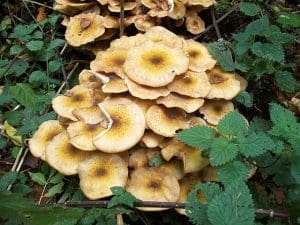
Stem:
They are fairly long up to 20cm, they are more bulbous towards the base and generally white to yellow in colour.
They have a skirt which is near the top of the stem.
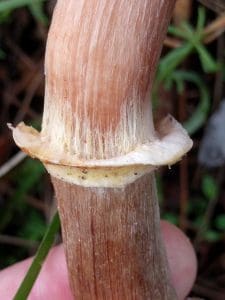
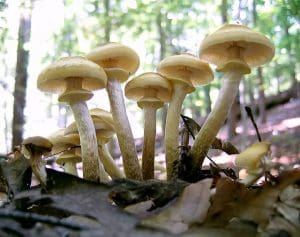
Gills:
The gills are white when young, darkening with age, fairly crowded and are slightly decurrent.

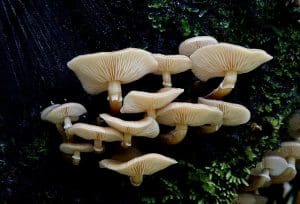
Smell:
Mushroomy.
Spores:
White to pale cream.
Uses
In food
They have a nutty almost sweet flavour and work well in most dishes. The stems can get tough with age so are often discarded.
They must be thoroughly cooked before consumption and even then they aren’t tolerated by everyone.
If it is your first time trying them you’re advised to thoroughly cook a small part and wait 24 hours to see whether there is any adverse reaction.
Harvesting
The younger caps are best as they can get slightly bitter-tasting with age. This can be removed if you boil them for a few minutes before frying them.
Known hazards
Tasty for most but they can cause gastric issues in roughly 1 out of 5 people.
Potential lookalikes
The Funeral Bell (Galerina Marginata) can look similar but is darker and has a distinct smell that is not pleasant. As the name suggests Funeral Bells are toxic so care should be taken.
The other main one to keep an eye out for is something called The Scaly Cap (Pholiota squarrosa) – which grows in a similar fashion – the easiest way to distinguish, amongst other features is that the scaly cap produces brown spores whereas honey fungus produces white spores (which can often be seen powdered on the caps growing under one another)
Extra Notes
As well as producing spores, Honey Fungus also develops rhizomorphs or ‘bootlaces’ these root-like structures can be found just underneath the bark of a host tree and they spread underground looking for more trees to infect.
There is a species of Honey fungus (Armillaria Ostoyae) in the USA that claims to be the world’s largest and oldest organism. Scientists believe it covers up to 4 square miles and is possibly up to 10,000 years old.
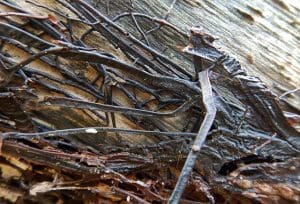



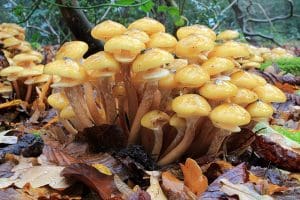



Leave a Reply
You must be logged in to post a comment.